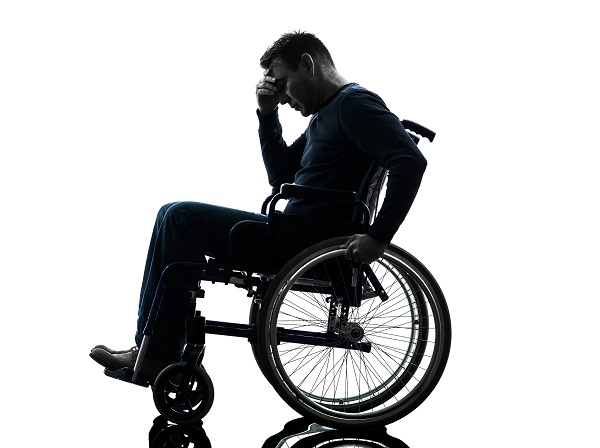The best spinal cord injury lawyers in California
Spinal Cord Injury
When you or a member of your family incurs a spinal injury leaving it difficult for them to work or live a normal life, it causes both emotional and financial distress to all involved.
Many spinal cord injuries have lifelong consequences and can render the victim completely paralysed or needing full time care. When a spinal injury is the result of medical negligence the victim and their family may be entitled to financial compensation. Our team of California based specialized brain injury lawyers and attorneys can advise you if you have a viable claim.
What is defined as a spinal injury?
A spinal cord injury (SCI) is damage to the tight bundle of cells and nerves that sends and receives signals from the brain to and from the rest of the body. SCI can be caused by direct injury to the spinal cord itself or from damage to the tissue and bones (vertebrae) that surround the spinal cord
There are three types of complete spinal cord injuries: Tetraplegia. Paraplegia. Triplegia. According to the National Spinal Cord Injury Statistical Center (NSCISC), the two most common types of spinal cord injuries are incomplete tetraplegia and paraplegia, with incomplete spinal cord injuries accounting for more than 65% of all SCIs.
Unfortunately, there’s no way to reverse damage to the spinal cord. But researchers are continually working on new treatments, including prostheses and medications, that might promote nerve cell regeneration or improve the function of the nerves that remain after a spinal cord injury.
The most common causes of SCI were automobile crashes (31.5%) and falls (25.3%), followed by gunshot wounds (10.4%), motorcycle crashes (6.8%), diving incidents (4.7%), and medical/surgical malpractice or complications(4.3%), which collectively accounted for 83.1% of total SCIs since 2005.


How do you claim compensation for a spinal injury in California?
If you have sustained a spinal cord injury due to an accident or attack, then our expert team of spinal cord attorneys can help by assessing the viability of your claim and managing the claim on your behalf. To ensure that you are awarded the maximum financial settlement available.
Our leading medical malpractice lawyer, Dr. Steven Heimberg is a physician and attorney, and is a formidable litigator. He has dedicated his career to helping people and fighting for justice exclusively on behalf of the injured throughout California, Los Angeles and the whole of the United States.
Our specialist spinal injury legal team has secured hundreds of millions of dollars on behalf of its clients, including:
- $9 million awarded to a man who became paralyzed after a solo auto accident in the rain that resulted due to negligently designed roadway
- $8.225 million for the victim of negligent unsupervised intraoperative neurophysiologic monitoring (IONM) and negligent spinal surgery, resulting in quadriplegia
- $6 million for a boy who became paralyzed after being dog-piled in the playground because the school failed to implement safety measures and negligently supervised students
- $5 million malpractice settlement for a patient whose undiagnosed epidural abscess after a successful neck surgery resulted in quadriplegia
California follows a rule of pure comparative negligence, meaning injured parties may obtain compensation for their injury minus the percentage they are found to be at fault for the accident. Thus, legal counsel for each party works to prove the innocence of their client and the negligence of the other party. Negligence is proved by illustrating four elements:
- Duty: The defendant had a general legal duty to avoid actions or situations harmful to others.
- Breach of duty: The duty of care was not exercised or fell below an accepted standard.
- Causation: The breach of duty is found to be the cause of the accident.
- Damages: Injury and losses were suffered resulting from the breach of duty


Schedule a free consultation with our team of Spinal Cord Injury attorneys and lawyers

Client Testimonials
Our clients’ satisfaction is our top priority, which is why we always are available to provide personal attention and we work with our clients to match their litigation objectives with their personal and business needs.

Our Location
How to get to our office
To get to our office from downtown Los Angeles we recommend the following methods.
Subway -The journey time between downtown Los Angeles and Hollywood is roughly 18 min. It’s operated by Metro Los Angeles, the Los Angeles to Hollywood subway service departs from Civic Center / Grand Park Station and arrives in Hollywood / Vine Station. Normally 524 subways run weekly.
Taxi -The journey time between downtown Los Angeles and Hollywood is roughly 8 min, depending on traffic, and depending on pickup location, is roughly 6.5 miles. Some of the taxi companies in the area are United Taxi, LA City Cab and Rosie Taxi Cab.
Bus -The journey time between downtown Los Angeles and Hollywood is roughly 30 min. It’s operated by Metro Los Angeles, the Los Angeles to Hollywood service departs from Broadway / 1st and arrives in Santa Monica / Bronson. Normally the bus runs run daily.
Car – Driving time from downtown Los Angeles to Hollywood is roughly 10 minutes depending on traffic. On average, parking lots and garages charge $1.00 per hour and $6.00 per day. On street parking costs $1.00 per hour.
